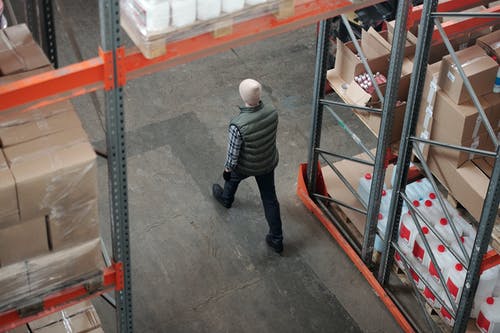Even though the new year has come and gone, COVID-19 is still a risk for warehouse workers and the companies they work for in 2021. Despite increased vaccine availability and distribution, you should still take precautions to minimize the spread of the Coronavirus among your workforce.
Effectively mitigating COVID-19 risks in the warehouse requires a diversified and multi-faceted strategy. In other words, masks and social distancing may not be enough by themselves to protect both your employees and your profit margins. Here are a few ways you can rethink how to conduct business in these unprecedented times, so you can get through them as efficiently and safely as possible.
Spread out the Workload during the Week
Some days have higher order volumes than others. In the past, it might have been standard practice to put more workers on shift for peak production days and let the warehouse operate with minimal staff on valley days. Because of the contagious nature of COVID-19, the crowded working conditions that this kind of approach requires is no longer safe.
Instead, it may be a good idea to implement a workload-smoothing strategy to spread the work out over multiple days. For example, if your usual delivery schedule has a lot of inventory coming in on Monday, try working with your suppliers to stagger deliveries across the entire workweek.
Likewise, it may be worth restructuring order schedules with your customers so they can still get what they need on a schedule that doesn’t put your employees at unnecessary risk of infection. There may be some growing pains at the start of this process, but by the end, you should have a warehouse that operates more efficiently without sacrificing worker safety.
Consider Adjusting Warehouse Layout
Another way to mitigate the spread of Coronavirus in the warehouse is changing the setup of your warehouse. Congestion in aisles and between shelving units is already a hassle for many warehouses, and with close contact greatly increasing the odds of COVID-19 transmission, fixing those bottleneck areas and streamlining picking and sorting processes should be an even higher priority.
Be Proactive in the Event of Potential Exposure
Of course, any prevention strategy will only work if warehouse managers react appropriately to a potentially sick employee. If anyone on the warehouse floor displays or reports Coronavirus symptoms, managers should immediately take them off shift, ensure they get home safely, and ensure their workspace is thoroughly cleaned and disinfected. A temporary slowdown in workflow for one day is better than having to shut down an entire warehouse for several weeks, and that fact should inform every action you take to stop the spread of COVID-19 in your warehouse.

